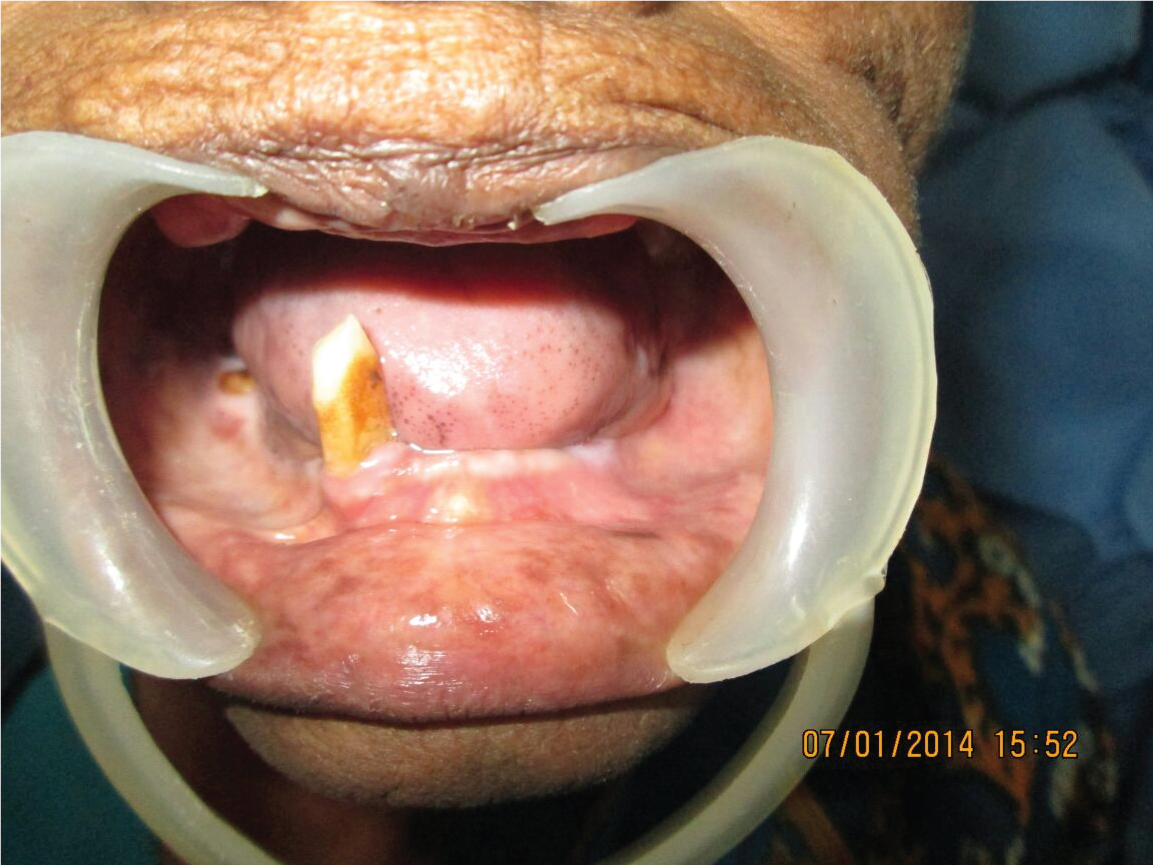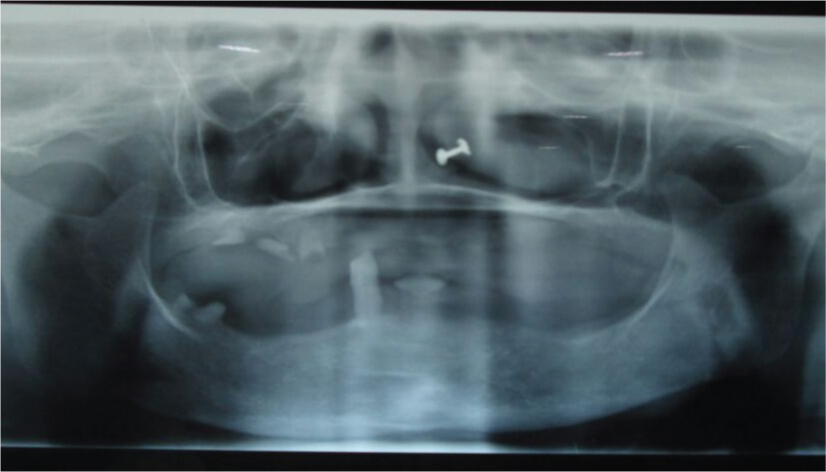Peripheral Neurectomy for Trigeminal Neuralgia: Simple Technique for a Complex Disease
Basavaraj C. Sikkerimath1, Mustafa I. Merchant2, Niranjan S. Patil3, Semmia M. Mathivanan4
1 Professor and Head of Department, Department of Oral and Maxillofacial Surgery, PMNM Dental College and Hospital, Bagalkot, Karnataka, India.
2 Consultant Oral and Maxillofacial Surgeon, Acharya Shri Nanesh Hospital, Navi Mumbai, Maharashtra, India.
3 Consultant Oral and Maxillofacial Surgeon, Acharya Shri Nanesh Hospital, Navi Mumbai, Maharashtra, India.
4 Senior Lecturer, Department of Oral and Maxillofacial Surgery, Chettinad Dental College and Research Institute, Kancheepuram, Tamil Nadu, India.
NAME, ADDRESS, E-MAIL ID OF THE CORRESPONDING AUTHOR: Dr. Niranjan S. Patil, Anjali Plaza, A- Wing Plot No 62, 13/3rd Floor, MCCH Society, Panvel, Navi- Mumbai-410206, Maharashtra. India.
E-mail: niranjanspatil01@gmail.com
The decision to institute surgical alternatives in the management of pain for trigeminal neuralgia should be taken when drugs no longer provide relief or the patients cannot endure the adverse effects of the prescribed drugs. Classical trigeminal neuralgia (TN) is usually unilateral, characterized by recurrent, brief, very severe, shock-like and stabbing pain paroxysms in the 2nd and/or 3rd trigeminal branch. Trigeminal neuralgia is well recognised and distinctive in nature. The diagnosis and management of TN traditionally lies in the hands of neurologists, anaesthesiologists, oral and maxillofacial surgeons, neurosurgeons and neuroradiologists. Peripheral procedures are usually performed in patients not suitable for or not willing to undergo other procedures. However, no strict rules exist and each patient should be evaluated individually. This case report is an effort to reiterate that peripheral neurectomy is a less formidable procedure, with low morbidity, highly repeatable and easy to perform procedure in countries like India which has majority of rural population and cannot afford advanced treatments. Patients with TN usually describe attacks of intense pain lasting for several seconds on one side of the face [1,2]. The disease usually affects people with the age of 40 or older and has predilection for 1.5 times as many women as men [3].
A 65-year-old lady presented for the evaluation of pain in the left side of her lower jaw. Further evaluation revealed the history of three years of severe (score of 7 in the visual analogue scale), shock-like and throbbing pain in the left V3 region, lasting from a few hours to days that increased by talking, chewing, and with cold weather, eating food or drinking cold water. Patient described the trigger zone to be the mucosa of the alveolar ridge involving the first premolar region [Table/Fig-1]. She did not sleep well because of the pain. Patient was not a denture wearer nor were there any clinical signs of mucosal inflammation or any other pathology. Systemic disorder of hypertension or any other diseases were ruled out. She was prescribed the following medications: Tab Carbamazepine (200 mg every eight hours) for six months and tab Baclofen 10 mg daily was prescribed [4] which failed to alleviate her pain. Orthopantomogram was advised and didn’t show any pathology [Table/Fig-2]. Surgical plan was to perform a mental neurectomy under local anaesthesia. Maintaining asepsis, local anaesthesia with adrenaline 1:80,000 block of the left inferior alveolar nerve along with mental nerve block was performed. A three cornered flap was planned and raised along the crest to expose the mental nerve which was freed from its bony canal and adjacent soft tissues. The neurovascular bundle containing the nerve was ligated on either sides and excised [Table/Fig-3,4]. The foramen was blocked using bone wax [Table/Fig-5]. Ensuring complete haemostasis the wound was irrigated copiously and flaps sutured. The patient’s pain score reduced from 8 on VAS to 1 on VAS and was followed up for two years postoperatively; she remains symptom free with relief from pain.
Intra oral view of the patient.

OPG showing no abnormality.

Identification and release of nerve from the soft tissues.


Sealing of the canal with bone wax.

Postoperative intra oral view.

Although medical modalities reduce the pain of TN in many patients, some don’t benefit from drugs as do others. Surgical alternatives are indicated when drugs fail to control pain, patients are not tolerant to the adverse effects of drugs, or in medically compromised patients [5]. TN is a rare disease which affects between 4 to 40 new patients – per 100,000 persons every year [3,6]. The pain usually responds to "triggers zones" caused by agents such as cold, heat, chewing, talking or touching the affected area [4]. Attacks may last for several minutes or hours, with pain-free periods between attacks being common, possibly continuing for weeks or even several years [1].
Many other treatments have been formulated for TN including other advanced surgical options, still peripheral neurectomy remains one of the most commonly performed procedures in literature and in practice for the treatment of TN in a country like India which has majority of rural population and cannot afford advanced treatment options with regards to TN [5].
[1]. Olesen J, Classification and Diagnostic criteria for headache disorders, cranial neuralgias and facial pain Cephalalgia 1988 8(suppl 7):1-96. [Google Scholar]
[2]. Krafft RM, Trigeminal neuralgia Am Fam Physician 2008 77(9):1291-96. [Google Scholar]
[3]. Manzoni G, Torelli P, Epidemiology of typical and atypical craniofacial neuralgias Neurological Sciences 2005 26(S2):s65-67. [Google Scholar]
[4]. Bennetto L, Patel NK, Fuller G, Trigeminal neuralgia and its management BMJ 2007 334:201-05.doi: 10.1136/bmj.39085.614792.BE [Google Scholar]
[5]. Chandan S, Halli R, Sane V, Peripheral neurectomy: minimally invasive surgical modality for trigeminal neuralgia in indian population: a retrospective analysis of 20 cases Journal of Maxillofacial and Oral Surgery 2013 13(3):295-99. [Google Scholar]
[6]. MacDonald B, The incidence and lifetime prevalence of neurological disorders in a prospective community-based study in the UK Brain 2000 123(4):665-76. [Google Scholar]